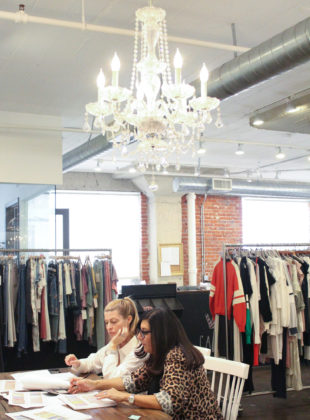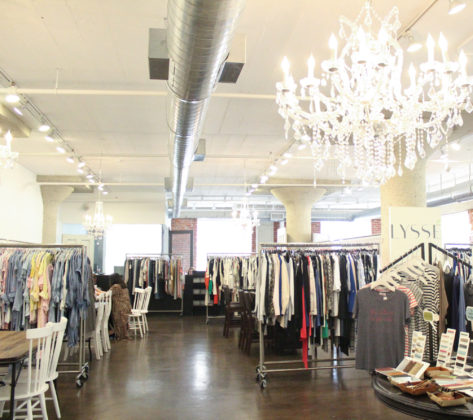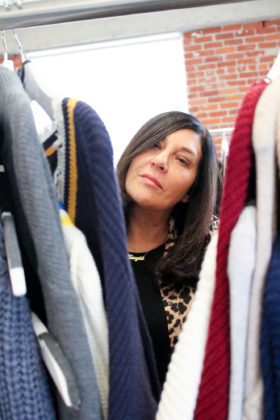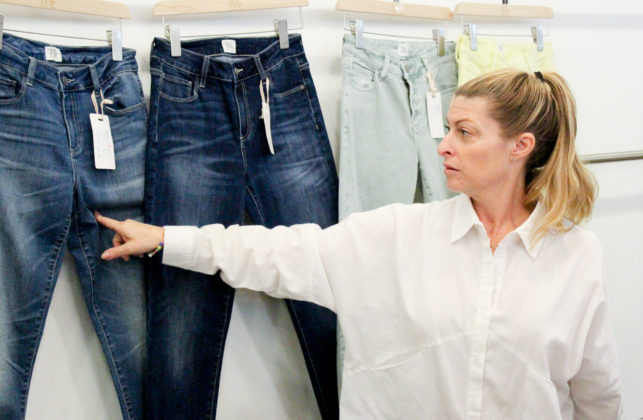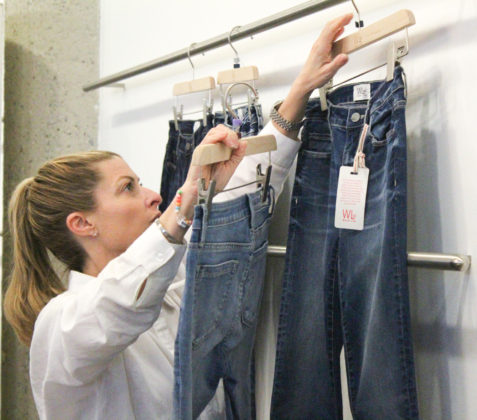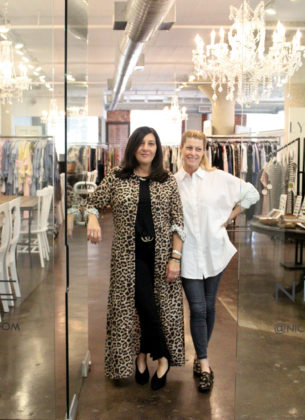Going on television to sell clothing on a 24 hour broadcast that reaches 94 million people is a daunting task for anybody, especially when they have never been in front of a camera.
Although Susan Hart, president of Niche LA, was given training on how to host the show, it did not inspire confidence.
“I felt barely confident in the training they gave me,” Hart said. “Then you’re just thrown to the wolves and you’re on TV.”
As president of an independent agency that acts as a liaison between the designer and retailer, Hart went on the Home Shopping Network as an opportunity to broaden her client base and strengthen her brand identity.
“You can go on air at HSN, and in 15 minutes you can sell thousands of units of clothes,” Hart said. “There isn’t an online retailer in the country that you can click on and sell thousands and thousands of units in that short amount of time.”
Niche LA sells to approximately 1,000 boutiques across the 13 western states they represent, as well as Nordstrom’s, Neiman’s, Bloomingdale’s, Stitch Fix, Avery and South Moon Under.
Born in Massapequa, New York, Hart moved to California with the plan to go to the University of California, Los Angeles to major in psychology. She got a job in Los Angeles working at an adolescent psychiatric hospital, which was a challenge that didn’t make her happy.
Hart developed a passion for working in the fashion industry after meeting a group of women who were drawn to her energetic personality. After chatting poolside, one of the women from the group invited Hart to work with them in the fashion district.
But, this isn’t the first time she has been exposed to that world.
Hart first got a glimpse into the world of retail when her parents owned an Army and Navy surplus store when she was young; she worked the register, which gave her experience in retail.
“I actually never went to graduate school and got into the wholesale part of the fashion industry,” Hart said. “I never looked back. I just think it must have been in my blood.”
Hart said her mentor was Michael Glasser, a legend in the fashion industry primarily known for his work with denim.
“He taught me how to use my adjectives, how to set the table or paint a picture before I ever pick up a hanger, and how to set the sale,” Hart said. “Let them know what you want them to know before you even start showing them, and they can formulate an opinion.”
She now tries to share everything she learned from Glasser with her employees.
“This is a really empowering industry for females,” Hart said. “I do tell the young girls that it is a great environment for women to make money and make a name for themselves.”
While Hart has led a successful career, her most memorable moment comes from one of her biggest sales.
“My ‘I made it’ moment was when I got a $1 million order from Saks Fifth Avenue when I was 25 years old,” Hart said.
Her largest sale was an order worth about $1.5 million while she was on HSN.
“We were really excited,” Hart said. “We’re commissioned sales reps. So when you get an order of that size, obviously you know you’re going to have a good pay day.”
The biggest challenge the company faces is that fashion takes a back seat to necessities when times are tough.
“Fashion is expendable,” Hart said. “It’s not your top priority. Food and housing become your top priority when the economy is bad. I think the economy has certainly been my challenge and that certainly affects our industry a great deal.”
Another challenge facing the fashion industry is the large gap in price points. Trying to get a manufacturer to bring prices down is difficult.
“There’s high end luxury and then there’s fast fashion or well-priced merchandise,” Hart said. “There’s nothing in the middle anymore in fashion really.”
Fashion is an ever-changing industry, and technology is forcing people in the industry to adapt to new buyer trends.
“It used to be we would find magazines and tear pages and talk to designers, and now we’re just clicking and seeing the Paris fashion shows,” Hart said. “Technology has not only changed the influencers of our business, but it has now changed the shopping habits of our business.”
A shift to online shopping is a trend that continues to grow.
“Nordstrom’s is telling me that 60 percent of their volume is done in their online business, not in their brick and mortar stores,” Hart said.
While online shopping is convenient and fits into everyone’s schedule, it is still missing a way to connect the customer to the product, said Lisa Ozur-Wallach, vice president of Niche LA.
Social media could be the key to getting that connection to customers.
“I think online is growing, but I think they’re still struggling to figure out how to get that connection with the customer,” Ozur-Wallach said. “This is why the blog, Instagram and the influencer are so important, because that’s what is making that connection to the customer.”
Barbara James, the owner of Barbara James Showroom, agreed that social media is important for the fashion industry.
“It’s all about having a strong brand recognition online and also having a plan in place as far as social media,” James said. “Companies are basically looking for brands that can help drive business to their sites.”
While change can be problematic for companies, Hart plans to tackle it head-on to continue her success.
“The amount of change in the 30 years I’ve journeyed through this industry was intense and amazing,” Hart said. “The only reason I’m still here is because I’m good with change.”
Her future could lead many different ways, but for now, she wants to focus on what is happening now.
“Every day is different,” Hart said. “There’s a million different paths you can take.”
The only set plan is that she wants to be in the fashion industry for the foreseeable future.
“I think as long as you have the energy and the creativity, opportunity never leaves in this industry,” Hart said.

